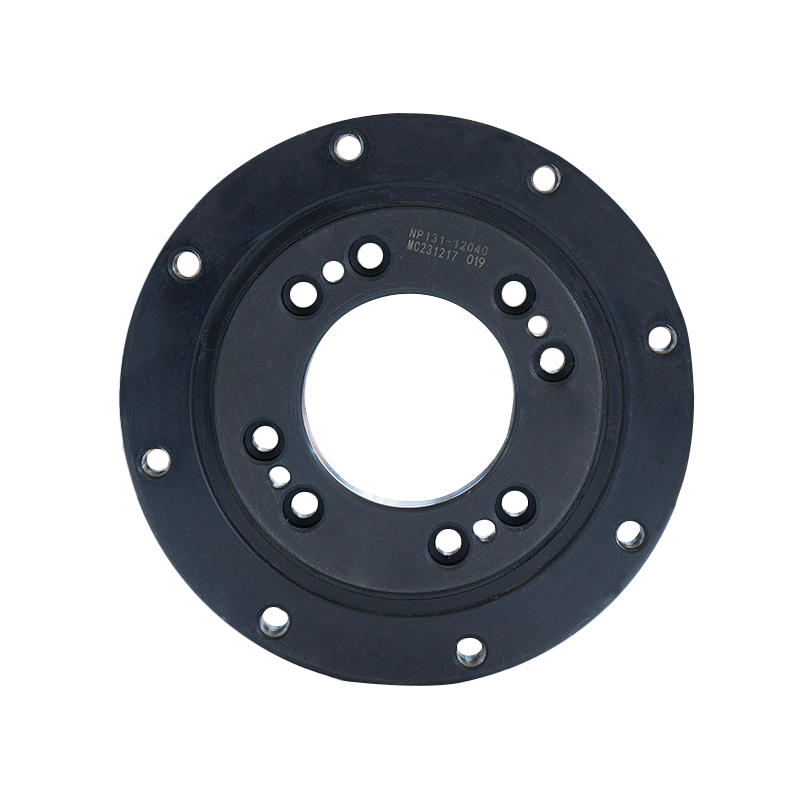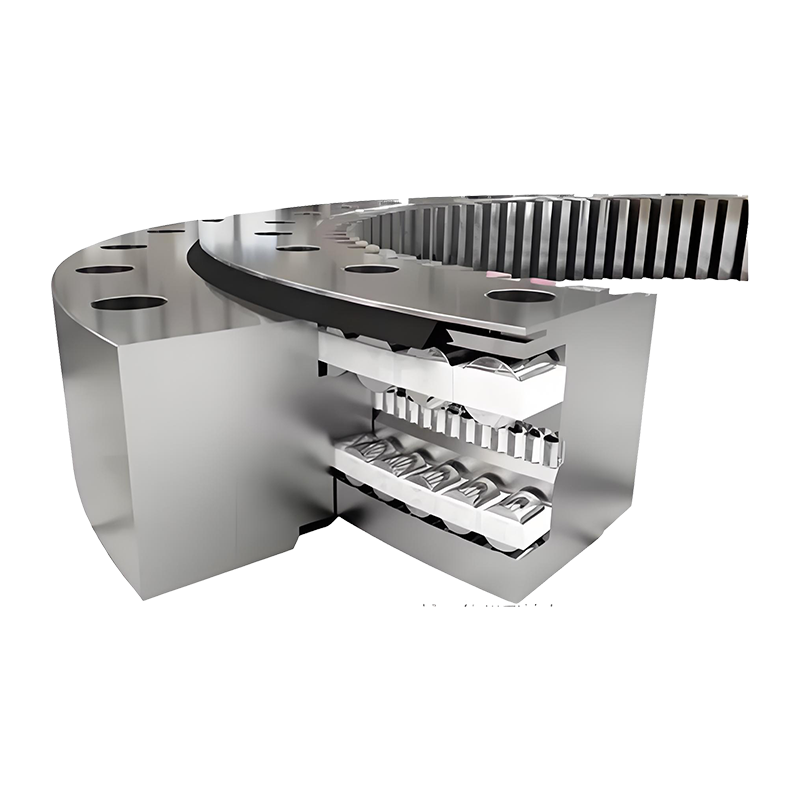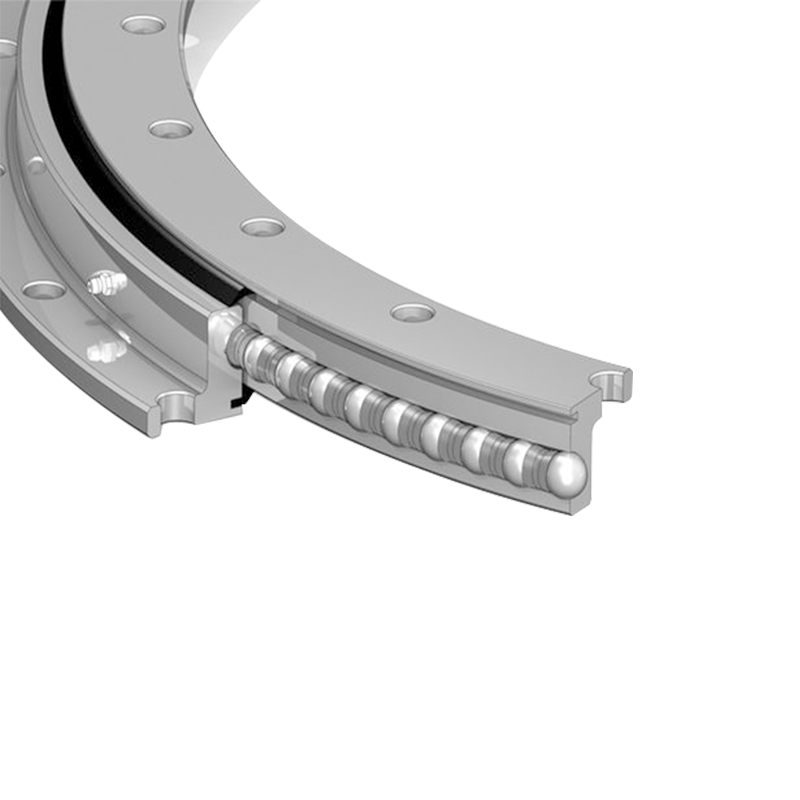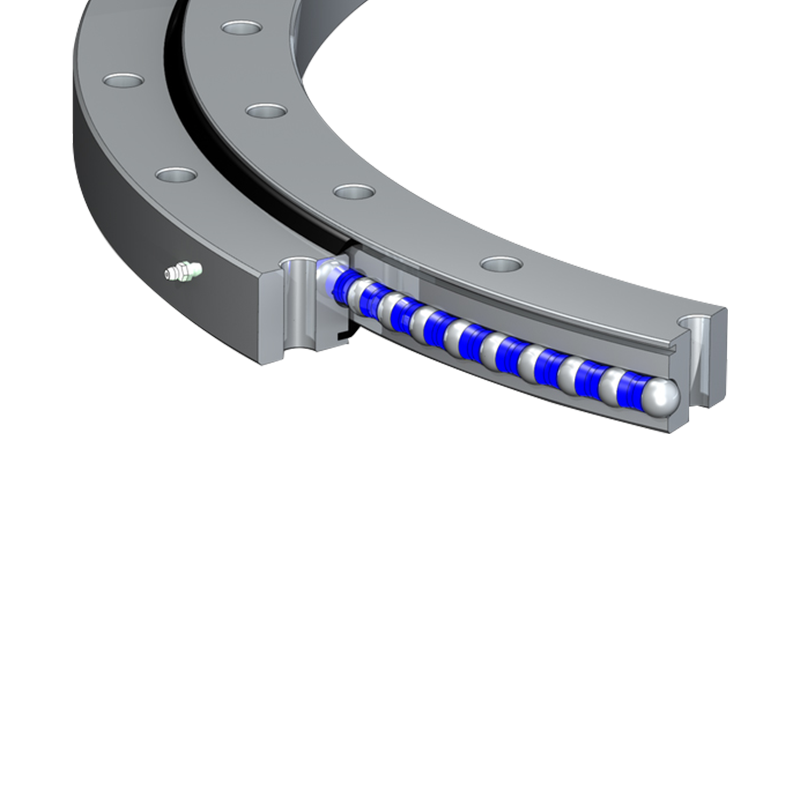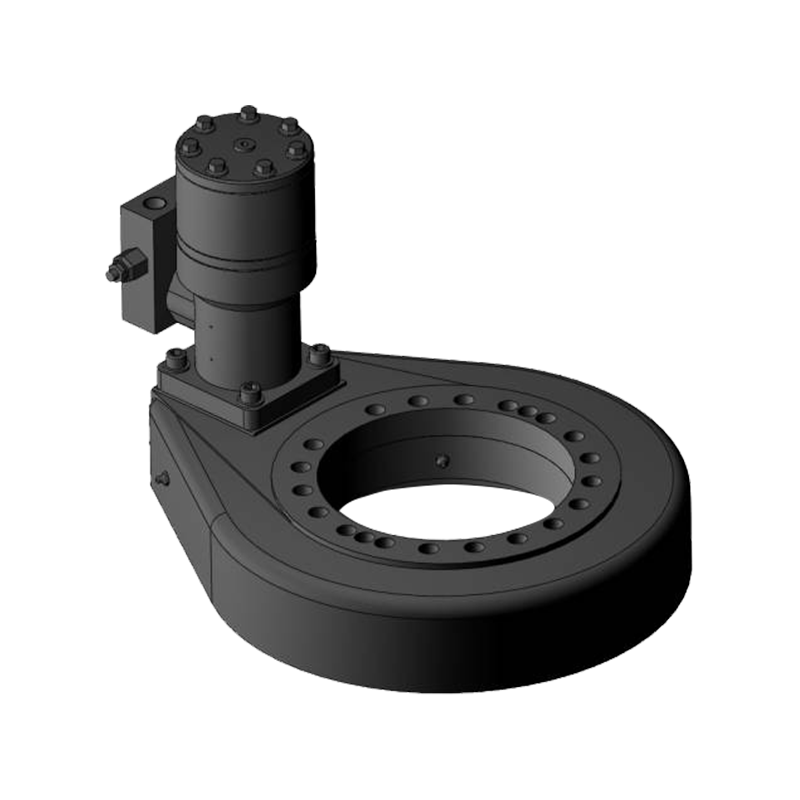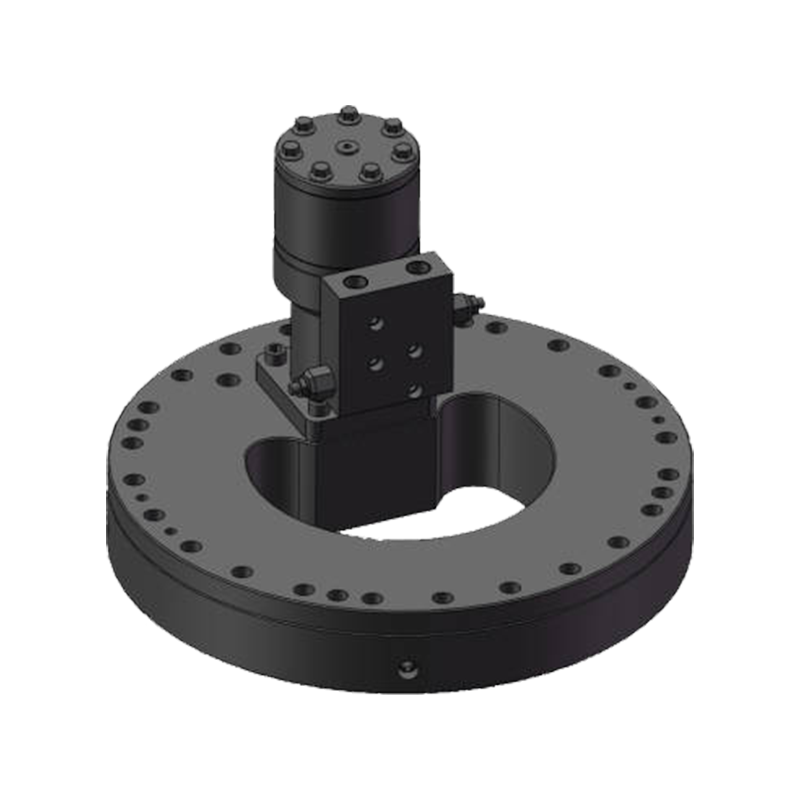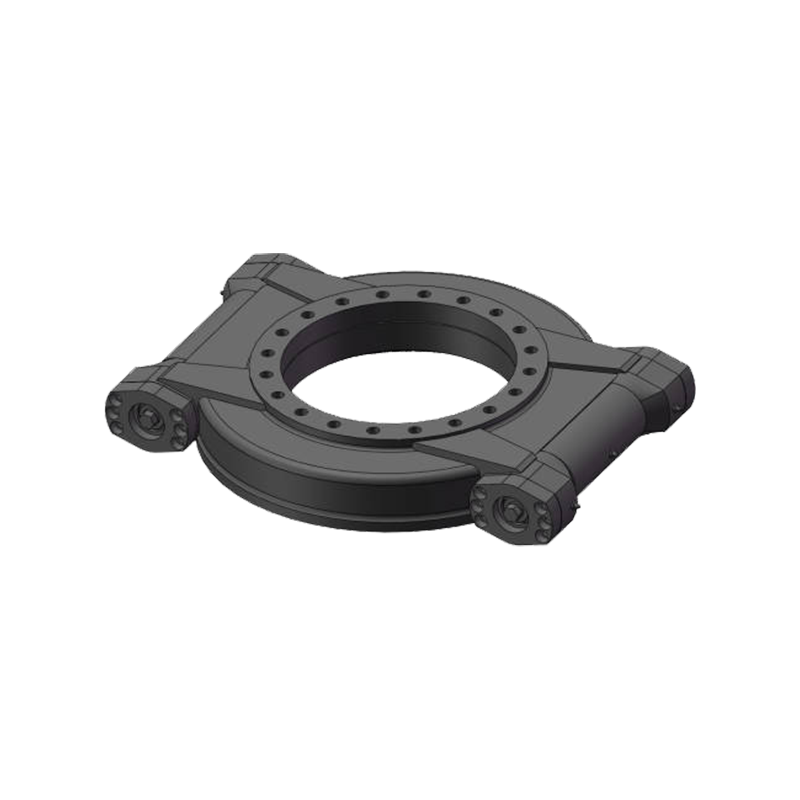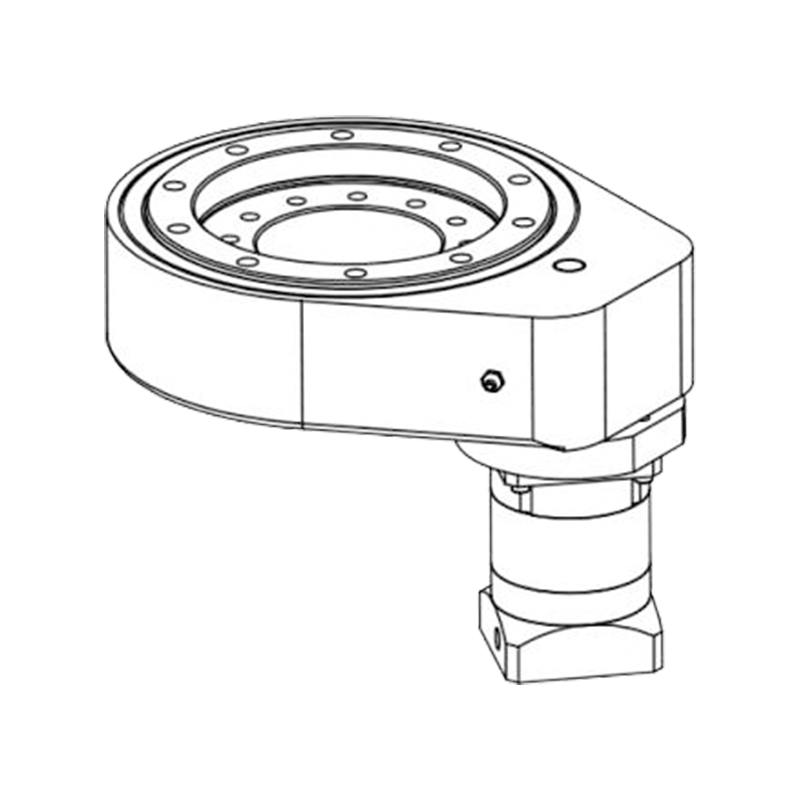How does a double-row equal-diameter four-point contact ball slewing bearing differ from a single-row slewing bearing?
 2025.07.17
2025.07.17
 Industry news
Industry news
A double-row equal-diameter four-point contact ball slewing bearing differs from a single-row slewing bearing in both internal structure and performance capabilities. While both are used in large-scale rotary applications such as cranes, excavators, wind turbines, and turntables, the double-row version is engineered to handle more complex loading demands, offer higher load capacity, and provide greater operational stability. Understanding the differences is essential for selecting the right bearing for a specific application.
1. Internal Structure
Single-Row Slewing Bearing:
Contains one row of balls that run in a single raceway. The four-point contact design enables each ball to contact both the inner and outer raceways at two points, allowing it to handle axial loads in both directions, radial loads, and tilting moments.
Double-Row Equal-Diameter Slewing Bearing:
Features two rows of balls with equal diameters, housed in two raceways on the inner and outer rings. Both rows maintain four-point contact, effectively doubling the number of contact points in the bearing. This results in:
Improved load distribution
Higher stability under combined loading
Better resistance to tilting and overturning forces
2. Load Capacity
Single-row slewing bearings are suitable for applications with moderate axial and radial loads.
Double-row slewing bearings are designed to accommodate much higher axial, radial, and moment loads due to the presence of two ball rows sharing the load. This makes them ideal for heavy-duty applications such as:
Large cranes and lifting platforms
Marine deck equipment
Wind energy yaw and pitch systems
Mining and tunneling machines
3. Stiffness and Stability
The double-row structure provides greater structural stiffness. This is especially beneficial when the bearing is exposed to continuous or variable high loads and must maintain positional accuracy.
The dual-row arrangement also minimizes deformation under heavy moment loads and improves resistance to deflection, which contributes to longer bearing life and smoother operation.
4. Dimensional Considerations
Because a double-row slewing bearing contains two raceways and more balls, it is typically larger in height and weight than a single-row equivalent with similar outer dimensions.
It requires more space for installation and may add weight to the overall system, which must be factored into the design of rotating machinery.
5. Manufacturing Complexity and Cost
Single-row slewing bearings are generally less complex to produce, which makes them more cost-effective for basic applications.
Double-row bearings, while more expensive, offer a higher-performance solution and justify the cost in environments where high precision, longer service life, and reliable load capacity are critical.
6. Application Suitability
| Application Type | Single-Row Bearing | Double-Row Four-Point Bearing |
| Load Type | Light to moderate combined loads | Heavy axial, radial, and moment loads |
| Rotational Speed | Moderate to high | Moderate to low |
| Space Constraints | Compact design required | Larger design acceptable |
| Load Consistency | Intermittent or steady loads | Heavy or fluctuating loads |
| Cost Sensitivity | More economical option | Higher investment, better performance |
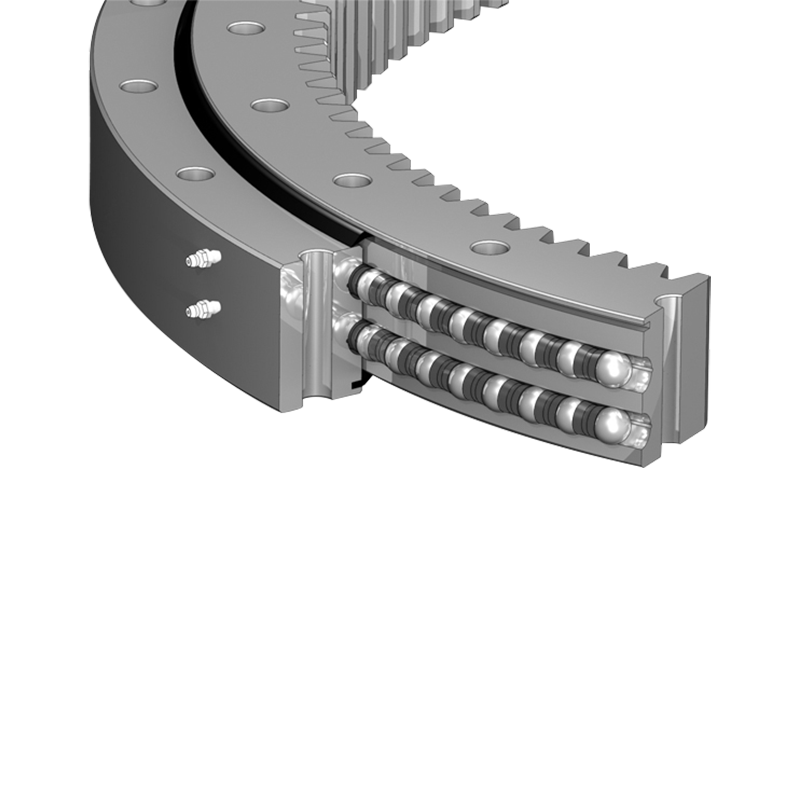
Conclusion
The primary difference between a double-row equal-diameter four-point contact ball slewing bearing and a single-row slewing bearing lies in their ability to handle loads. The double-row design offers enhanced load capacity, rotational stiffness, and stability, making it suitable for demanding industrial applications. On the other hand, single-row bearings remain a cost-effective and compact solution for applications with moderate load and space requirements. The choice between them should be based on specific engineering needs, including structural load, motion precision, and equipment design constraints.



